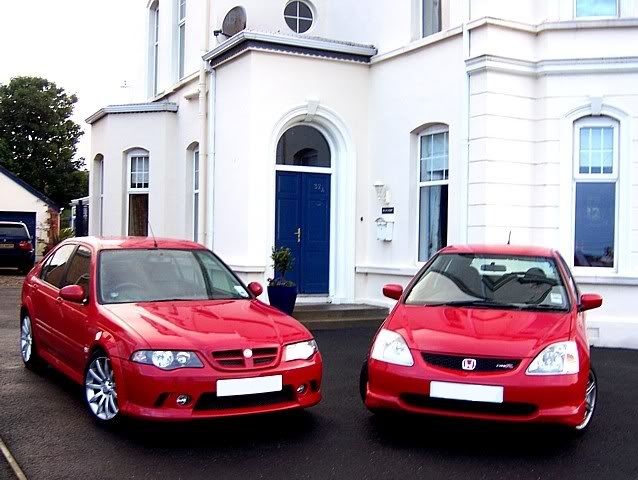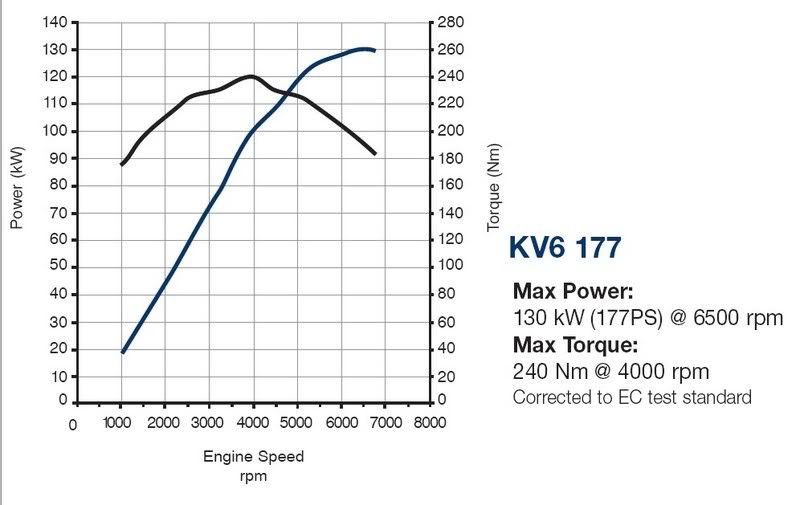Question about BHP + Torque
Discussion
Just wondering...
Q: Is it possible to merge both the BHP and Torque figure of a car into ONE performance figure, which would then allow 2 separate cars to be more easily compared?
For example:
(01-05) Civic Type R | 197bhp | 145lbft
(04-05) MGZS180 | 174bhp | 177lbft

I picked these 2 cars because I've owned one of them and driven the other at length. Both similar weight and performance - but one with higher bhp, and one with higher torque.
I don't have the mathematical ability to know the relationship between bhp and torque, or what factors would need to be applied to either bhp or torque in order for a single figure to work.
Q: Is it possible to merge both the BHP and Torque figure of a car into ONE performance figure, which would then allow 2 separate cars to be more easily compared?
For example:
(01-05) Civic Type R | 197bhp | 145lbft
(04-05) MGZS180 | 174bhp | 177lbft

I picked these 2 cars because I've owned one of them and driven the other at length. Both similar weight and performance - but one with higher bhp, and one with higher torque.
I don't have the mathematical ability to know the relationship between bhp and torque, or what factors would need to be applied to either bhp or torque in order for a single figure to work.
kambites said:
Yes, what actually determines performance is the average height of the used part of the power curve. So if you change up at 7000rpm and it drops you to 5000rpm, you want to take the average power generated between 5000 and 7000rpm.
Or to put it another way, the area under the used part of the power curve, divided by the difference between the gear ratios.
ETA: Unless, of course, you are accelerating from so slow that you can't use the top end of the rev range in first gear, or you don't know how to use a gearbox.
How do you define the used part of the power curve? Or to put it another way, the area under the used part of the power curve, divided by the difference between the gear ratios.
ETA: Unless, of course, you are accelerating from so slow that you can't use the top end of the rev range in first gear, or you don't know how to use a gearbox.

Edited by kambites on Monday 28th July 09:07
hairykrishna said:
Assuming this isn't a troll to kick off the inevitable argument...
Power is already derived from torque. Power=(torque x rpm)/ 5252 (assuming lb/ft and horsepower as units).
I'm definitely not trolling. Just trying to understand more about the topic. I didn't know bhp was a measure of torque. Power is already derived from torque. Power=(torque x rpm)/ 5252 (assuming lb/ft and horsepower as units).
Can you apply your example to one of the cars I listed?
The MG has 174bhp and 177lbft. if power = (177 x 6500rpm) / 5252 I get 219 as my answer, but bhp is 174.
Also, if an engine is modified to increase torque does bhp always change too?
ETA I was assuming rpm meant max rpm which if I remember in the MG was about 6.5k or 7k. Using 7k in the equation gives an answer of 235.
hairykrishna said:
As others have said, you're using the wrong rpm. Example dyno curve;

It's clear that the peak torque is much lower in the rev range than the peak power. As for the mod question - it depends what you mean by 'increase torque'. If the torque is increased at a given revs then the power at those revs also increases. This doesn't necessarily mean the peak power is increased.
Very helpful reply and you even used the KV6 from the MGZS180. 
It's clear that the peak torque is much lower in the rev range than the peak power. As for the mod question - it depends what you mean by 'increase torque'. If the torque is increased at a given revs then the power at those revs also increases. This doesn't necessarily mean the peak power is increased.
Where I have become confused then, is every time I see one of these graphs (which are referred to and posted a lot) I'm making an assumption that both power and torque are independent of one another, when they are in fact linked.
I didn't know that power as a measurable output already factors torque into the equation. If I understand correctly - although they are linked, it's not necessarily a linear relationship - in the example of the KV6 torque tails off but bhp begins to peak.
My questions then would be in relation to the two cars I posted figures for (again just trying to get my head around it):
If torque enables an engine to produce bhp,
1) Why does the K20 manage to produce 1.36bhp per lbft of torque (1.36:1) when the KV6 only puts out 0.98 bhp per lbft (.98:1)
2) What is the typical bhp:torque(lbft) ratio for most engines? 1:1? (And do manufacturers aim for a certain ratio or relationship when considering "driveability"?)
some cursory research shows the new M3 to be around 1:1 for example.
N
Edited by manmaths on Monday 28th July 11:47
Mr2Mike said:
If you consider that peak power and peak torque occur at different engine speeds this should become obvious. Torque is primarily determined by the displacement and volumetric efficiency, i.e. how much air and fuel the engine consumes on each cycle. This is why large capacity engines produce more torque than smaller ones, and why supercharged engines produce more torque than equivalently sized normally aspirated engines.
To make a normally aspirated engine produce high peak power, there often isn't much that can be done to significantly increase the peak torque value. Instead, the engine is designed to maintain a good level of torque at a higher RPM than normal. A K20 is still producing 90% of it's peak torque at 8000RPM. Compare that with an average 2.0L engine from a family car where torque has fallen off a cliff edge by around 6500RPM. These high revving engines will have a high peak bhp/peak torque ratio, the original EK9 Type R Civic would score 1.55.
OTOH the old lazy American V8s often produced a fairly high peak torque (simply due to their displacement) but a laughable peak power because the engines design means they were unable to fill the cylinders with much air at high RPM (i.e. volumetric efficiency falls off very quickly). These would have a low peak bhp/peak torque ratio e.g. an early 80's Ford Mustang with a 4.9L V8 would produce only 140bhp, but made 230 lbft of torque, scoring it a lowly 0.6.
A modern supercharged/turbocharged engine can produce both high peak torque and high power from a small engine. These would give a power/bhp ratio of around 0.8-0.9, i.e. peak torque a little higher than peak power.
To make a normally aspirated engine produce high peak power, there often isn't much that can be done to significantly increase the peak torque value. Instead, the engine is designed to maintain a good level of torque at a higher RPM than normal. A K20 is still producing 90% of it's peak torque at 8000RPM. Compare that with an average 2.0L engine from a family car where torque has fallen off a cliff edge by around 6500RPM. These high revving engines will have a high peak bhp/peak torque ratio, the original EK9 Type R Civic would score 1.55.
OTOH the old lazy American V8s often produced a fairly high peak torque (simply due to their displacement) but a laughable peak power because the engines design means they were unable to fill the cylinders with much air at high RPM (i.e. volumetric efficiency falls off very quickly). These would have a low peak bhp/peak torque ratio e.g. an early 80's Ford Mustang with a 4.9L V8 would produce only 140bhp, but made 230 lbft of torque, scoring it a lowly 0.6.
A modern supercharged/turbocharged engine can produce both high peak torque and high power from a small engine. These would give a power/bhp ratio of around 0.8-0.9, i.e. peak torque a little higher than peak power.
 cheers for the detailed reply. All made sense to me.
cheers for the detailed reply. All made sense to me. N
Gassing Station | General Gassing | Top of Page | What's New | My Stuff





